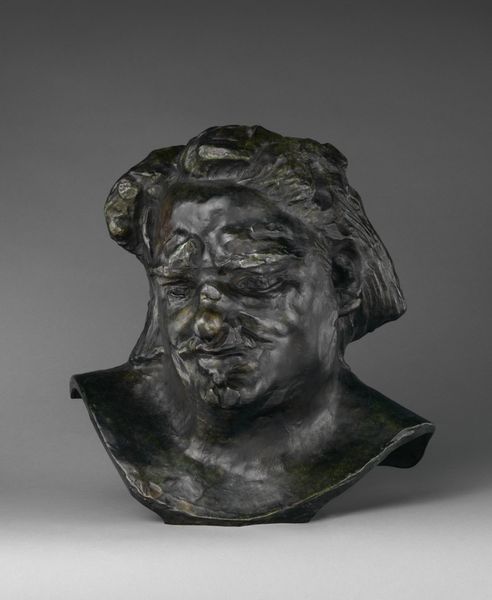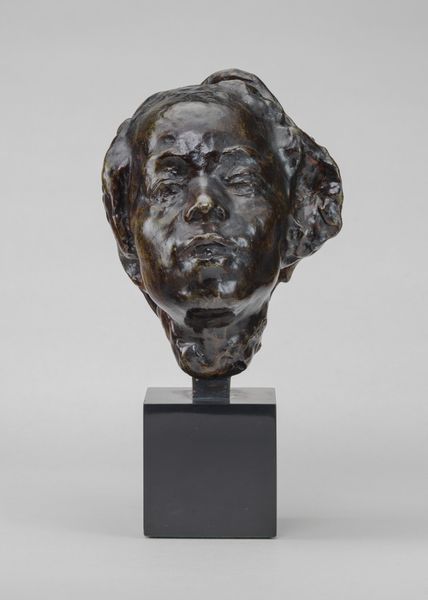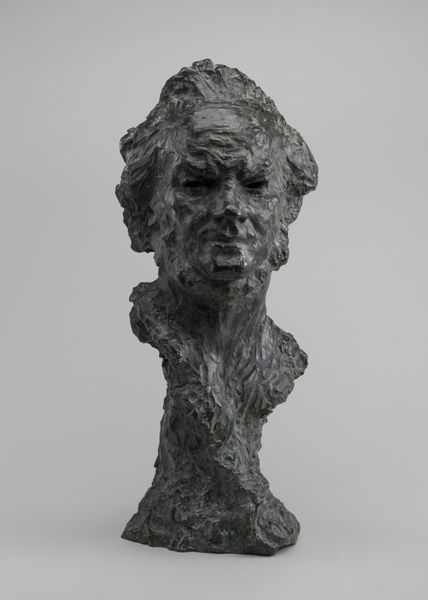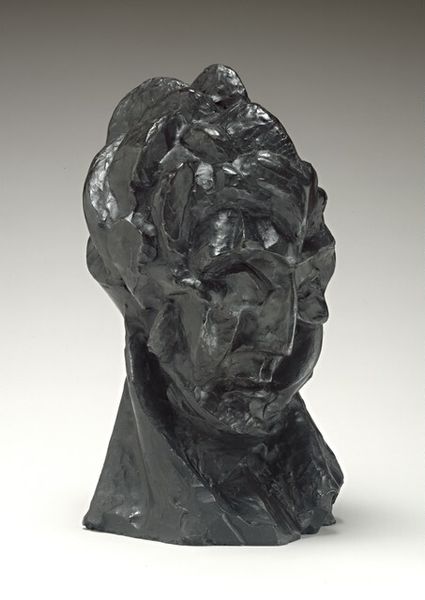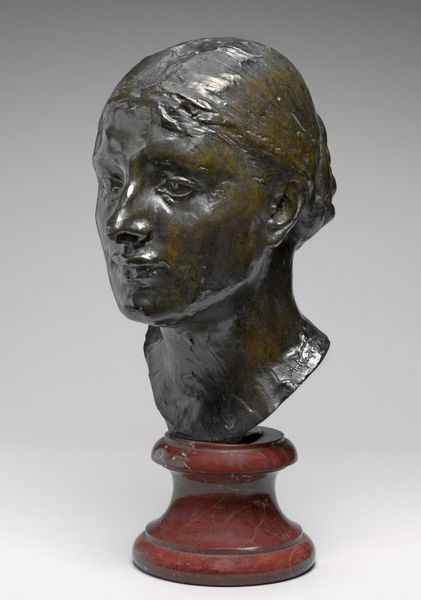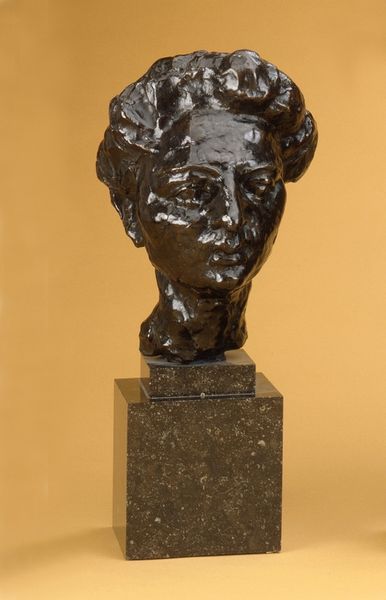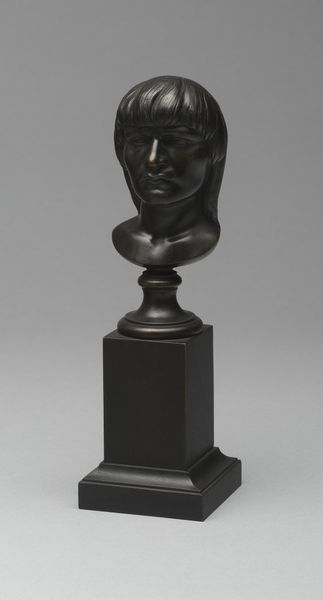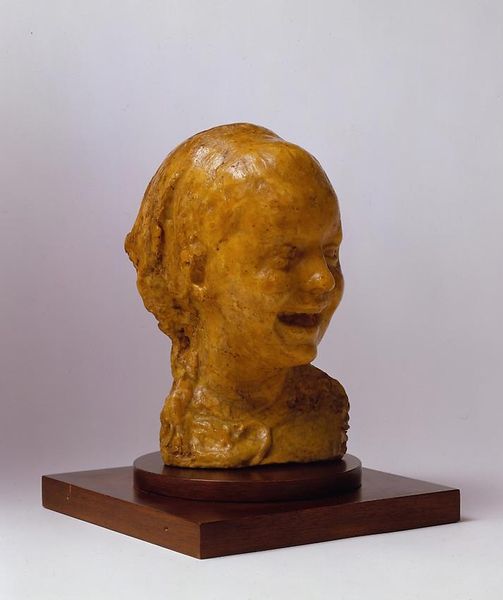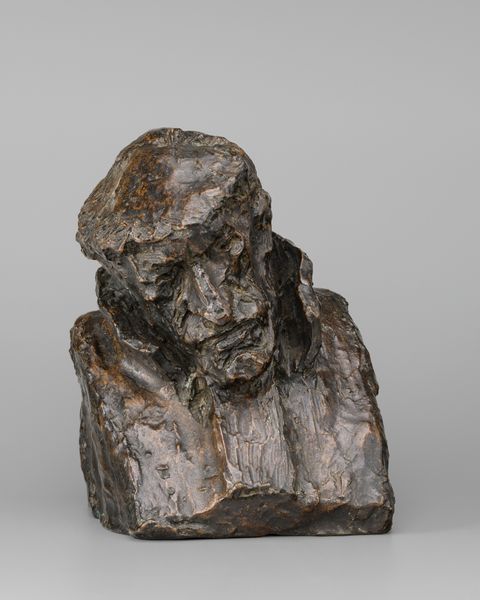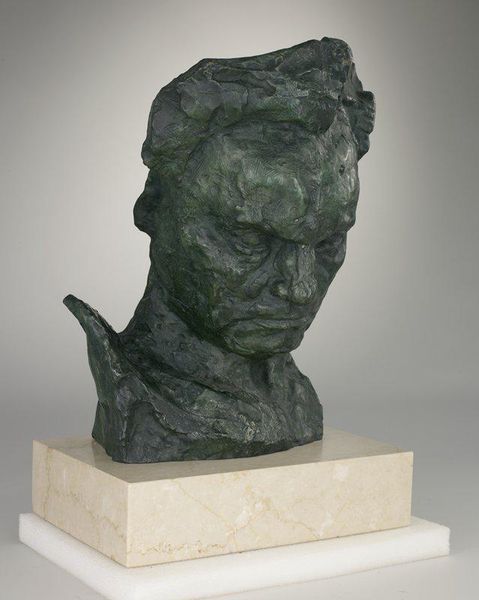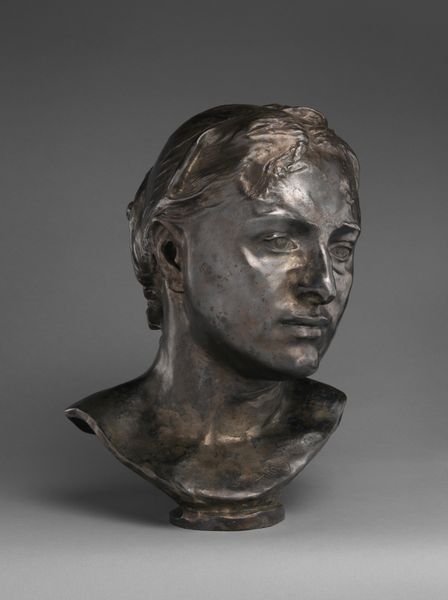
bronze, sculpture
#
portrait
#
stone
#
sculpture
#
bronze
#
sculpting
#
sculpture
#
realism
Dimensions: overall: 16.5 x 20.9 x 18.1 cm (6 1/2 x 8 1/4 x 7 1/8 in.)
Copyright: National Gallery of Art: CC0 1.0
Auguste Rodin created this bronze head of Balzac. Rodin was a master of capturing the vitality of the human form. Here, he has left visible marks of his own making, the vigorous modelling of the clay apparent in the final bronze cast. Look closely, and you'll see the way the light catches the irregular surface, full of texture. The rough modeling, created using additive and subtractive methods, imbues the work with an unfinished quality that is heightened by the dark brown color of the metal. This wasn't just about replicating Balzac’s features; it was about conveying his essence as a writer, his intellect and creative energy. Sculpting in bronze is an intensive process. There’s the modeling in clay, then the creation of a mold, the pouring of the molten metal, and the finishing touches. Rodin often employed assistants in his studio, who would execute much of the labor-intensive work under his direction. This division of labor raises questions about authorship and the value of craft skill in the age of industrial production. By emphasizing process and materiality, Rodin elevated sculpture beyond mere representation, positioning it as a powerful expression of both the artist's hand and the subject's inner life.
Comments
No comments
Be the first to comment and join the conversation on the ultimate creative platform.
